Unlike the socialist revolutions of the last century, the Islamic Revolution of Iran did not identify itself with the working class or the peasantry, and did not bring a well-defined economic strategy to reorganize the economy. Apart from eliminating the interest rate from the banking system, which was achieved in name only, the revolution put forward few specific economic policies that could be called an Islamic economic development strategy. To be sure, its populist and pro-poor rhetoric was quite distinct from the Pahlavi regime it replaced, but its actual policies could be found in the toolboxes of most developing countries and international organizations.
For the most part, pragmatism and the worldviews of individual leaders who commanded the state machinery—prime ministers in the 1980s and presidents afterwards—determined the direction in which the economy moved. The strong anti-market policies of the 1980s, when the government rationed goods and took over banks and large industries, were more the result of circumstances than ideology—the eight-year war with Iraq and the flight of the Pahlavi-era upper class.
In the early 1990s, to the surprise of the visiting teams from the World Bank and International Monetary Fund, the government’s rhetoric and policies radically shifted to become pro-market. Without any benefits in terms of loans from these organization, the administration of President Ali Akbar Hashemi Rafsanjani (1989-1997) implemented structural adjustment. Likewise, the shift from the populist administrations of President Mahmoud Ahmadinejad (2005-13) to the neoliberal Hassan Rouhani administration starting in 2013 did not amount to a break with economic ideology of the Islamic Republic.
The main shift in policy after the revolution can be characterized as from urban-biased and elite-centered to rural-biased and populist. Populism in the Islamic Republic has a natural origin—the huge oil boom of the 1970s—which gave Iran a windfall in terms of a large inflow of foreign exchange. Unaware of the vagaries of the world oil market, the revolutionaries believed that the road to a bright economic future was paved with rising oil revenues.
Such thinking immediately after the largest oil windfall in Iran’s history is not surprising. In the five years before the revolution, 1974-79, oil revenues had exceeded one trillion dollars (in 2018 dollars), about $5,000 per person per year. However, within a decade, population growth, falling oil prices, and lower oil production made delivery on populist promises very difficult. During the second oil boom, 2003-2013, oil revenues per person had declined to one-fourth of their value in the 1970s and in 2018 to one-tenth of their 1970s value.
The dividends of populist policies
The pro-rural and pro-poor approach of the Islamic Revolution did make its mark on Iran’s economy and society, by building infrastructure that has all but eliminated the rural-urban divide, a relic of Iran’s feudal past. The shah’s land reform of the 1960s was the first step in this direction, but his urban-biased economic policies in the 1970s stopped well short of closing the divide.
After the revolution, expansion of basic services, such as electricity and clean water, which had become the norm in pre-revolution urban Iran, accelerated in rural areas. By 2000, these services had become universal, and household amenities—such as washing machines and air conditioners—had expanded significantly (see Figure 1). In the 1970s, resources had flowed much faster to the more privileged urban neighborhoods. For example, during 1973-75, when Iran was flush with cash, access to piped water in urban areas increased from 65 to 80 percent, while the gain in the disadvantaged rural areas was less than one percent, from 7.6 to 8.5 percent.
Figure 1. Change in access to basic services and key household amenities
 Source: Household Expenditure and Income Surveys, Statistical Center of Iran.
Source: Household Expenditure and Income Surveys, Statistical Center of Iran.
Expansion of health and education to rural areas sharply reduced poverty. The poverty rate, which had exceeded 25 percent in the 1970s, fell to less than 10 percent in 2014. (The poverty rate in both periods measures the share of population below the World Bank middle-income poverty line of about $ 5.5 PPP per person per day.) A major rural health program in the 1980s, which expanded to include family planning in the 1990s, revolutionized family life in the countryside, reducing infant and maternal mortality and fertility. As a result of its pro-poor social policies and despite the destruction caused by the war, Iran’s Human Development Index (HDI) increased to overtake that of Turkey by 1990, and has remained higher.
Comparison of GDP per capita between Iran and Turkey in Figure 2 is useful in benchmarking and putting in perspective the overall performance of the economy. The comparison also highlights Iran’s disadvantage relative to Turkey in terms of resources available to reach a certain level of HDI. What Iran lacked in terms of resources during this period, it was able to compensate for with shifting attention to rural areas.
Figure 2 is also useful in showing the heavy dependence of Iran’s economy on oil exports. The economy grew fast under both the shah and the Islamic Republic when oil revenues were high, and faltered after 2011, when sanctions reduced these revenues.
Figure 2. GDP per capita in Iran and Turkey, in Purchasing Power Parity U.S. dollars

Source: Maddison Project Data 2018.
Finally, to appreciate the extent of social development in the last 40 years, consider the changing composition of social classes before and after the revolution. Figure 3 shows the proportion of the population in four income groups: the poor, lower middle class, the middle class, and the rich. The data are derived from the household expenditure and income surveys collected by the Statistical Center of Iran for more than half a century, the micro files of which since 1984 data are publicly available. The thresholds for these income classes are based on per capita household expenditures, measured in purchasing power parity (PPP) U.S. dollars, of less than $5 (poor), $5-10 (lower middle class), $10-50 (middle class), and greater than $50 (rich). In 1972, the poor were the largest group, accounting for over 40 percent of the population, and the middle class comprised less than a quarter of the population. With the first oil boom, the share of the poor dropped to a close to a quarter of the population and the middle class share increased to more than one third, a little higher than the lower middle class share. After the revolution, these proportions remained about the same until the late 1990s, when they began to change dramatically in favor the middle class. By 2011, before sanctions hit, they accounted for about 65 percent of the population and the poor had dropped to less than 10 percent.
Figure 3. The share of income classes in Iran, 1972-2017

Notes: The poor are defined as living in households with less than $5.50 in expenditures per person per day (in PPP USD), the lower class in the $5.5-11 range, the middle class $11-50, and the rest are classified as rich. As with expenditure surveys in other countries, these surveys miss the very rich, which would raise their shares slightly. Source: Household Expenditure and Income Surveys, Statistical Center of Iran, various years.
Post-revolutionary policy failures
While the Islamic Republic has been relatively successful in the expansion of infrastructure for rural development and poverty reduction, it has failed in two important respects.
First, it has failed in providing job opportunities for its youth. The unemployment rate for college-educated youth is alarmingly high. For men and women aged 25-29, unemployment rates are 34.6 percent and 45.7 percent, respectively, according to the 2016-17 census. Such high unemployment rates for educated youth, occurring after a decade of robust growth, suggest deeper problems with the Islamic Republic’s model of economic growth.
The largest obstacle to job creation is the stifling of the private sector under the combined weight of an interventionist government bureaucracy and omnipresent foundations and state enterprises. The state domination of the commanding heights of the economy—the oil and gas sectors, large industries, and the banking system—discourage the rise of the private sector. Added to these structural impediments is the fact that the flow of oil income encourages corruption as well as anti-growth populist economic policies.
The oil boom of the 2000s was particularly harmful in this regard, especially in failing to prepare the country for the tightening international sanctions and rising tensions with the United States. The boom encouraged imports, rent seeking, and crony capitalism, as well as hurt employment. Oil exports enabled the populist Ahmadinejad government to keep the exchange rate low, which encouraged cheap imports, discouraging domestic production and employment. Similarly, by using the abundant energy at its disposal for domestic distribution (twice as much as it exported), various Islamic governments in Iran have kept domestic energy prices low (the lowest in the world after Venezuela). This policy has not only bankrupted the public purse, it has also encouraged the replacement of workers with energy-intensive machinery. The combined influence of these policies resulted in jobless growth during the oil boom. Between 2006 and 2011, census figures reveal that the economy added only 14,000 jobs each year when on average 700,000 young people entered the labor market.
It is no wonder that at that time youth flocked to various education institutions seeking diplomas. Enrollments in higher education soared, rising by 80 percent from 2005 to 2015. The result has been a rather peculiar situation in which more education is associated with higher unemployment, as shown in Figure 4. The social exclusion of women, which is also depicted in figure 4, is a particularly unproductive feature of Iran’s post-revolution labor markets.
Figure 4. Unemployment and education

Source: Two-percent sample of the National Census of Population 2016/2017, Statistical Center of Iran.
A second failure, given the lofty egalitarian goals of the revolution, is high and persistent inequality. The Gini index of income inequality in Iran has remained generally above 0.40, no different than that of Turkey, which has no particular claim to egalitarian development. The only time when the Gini index fell below this level was following generous cash transfers, which were distributed as part of Ahmadinejad’s energy subsidy reform. Emphasis on equalizing incomes instead of productivities is the hallmark of petro-populism.
The failure to deliver inclusive economic growth is seen not only in high income inequality, but also in high degrees of inequality of opportunity. Despite a relatively egalitarian approach to building schools, access to educational opportunities has remained highly unequal. Iranian children who enter school have a lower probability of reaching secondary school than their counterparts in Egypt, Jordan, and Tunisia. Furthermore, an Iranian child from a disadvantaged background has about one-fourth the likelihood of a child from an advantaged background to reach secondary school. Similarly, high levels of inequality of opportunity in educational achievement are observed from math and science scores collected by the Trends in Mathematics and Science Study (TIMSS).
Lessons learned and missed
There were two lessons that the revolutionaries could have learned from looking at the Pahlavi-era development strategy. The first, from the 1970s, was about the problems of urban bias and neglecting rural-urban divide. This lesson helped the Islamic Republic to engage in more inclusive growth and to unleash the productive potential of a much wider spectrum of the Iranian society.
But there was another, equally important lesson that could have been drawn from economic growth before the revolution, this one from the 1960s. During 1962-72, when oil revenues were very modest, Iran managed to grow its economy more than 10 percent per year, doubling its GDP per capita in a short period (see Figure 2). One important lesson from this experience which has resonated with Iran’s middle class and the moderate Rouhani government, is the need for Iran’s economy to stay connected to the rest of the world, and to pursue policies that emphasize jobs instead of consumption.
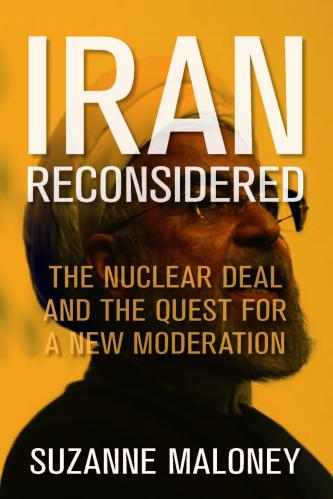
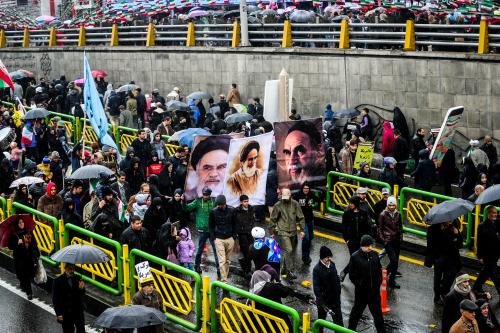
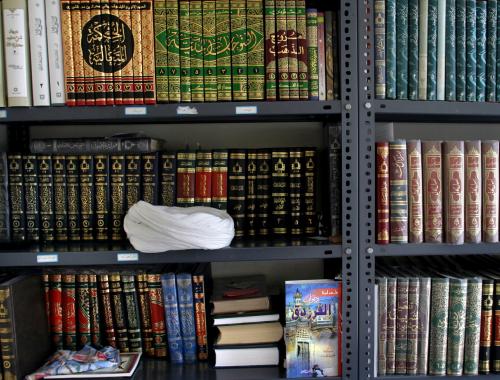
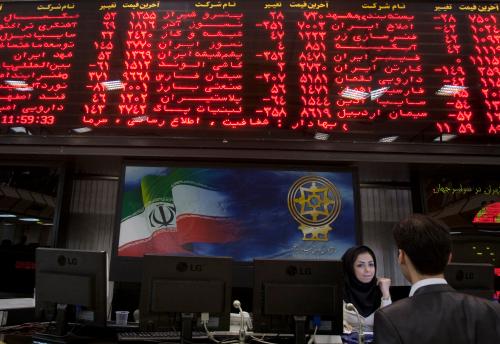
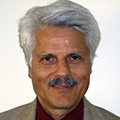


Commentary
Iran’s economy 40 years after the Islamic Revolution
March 14, 2019